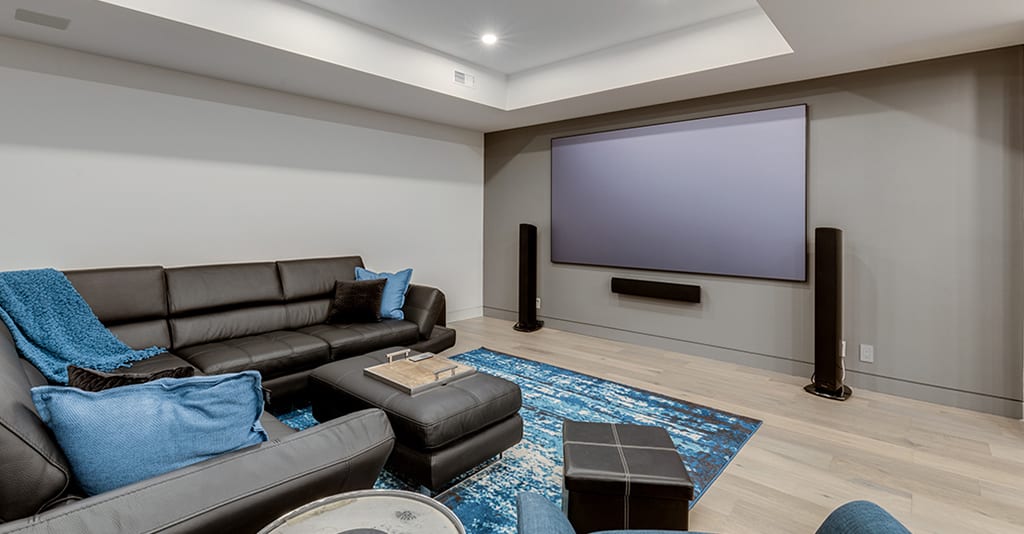A home theatre power manager is one of the most essential yet underrated components of a modern entertainment setup. While many people focus on buying high-quality TVs, speakers, and receivers, they often overlook the importance of clean and stable power.
Every piece of your equipment depends on electricity, and fluctuations in power can lead to reduced performance or even permanent damage. That’s where a home theatre power manager comes in — it safeguards your investment, optimizes performance, and keeps your setup running efficiently.
What Is a Home Theatre Power Manager?

A home theatre power manager is a specialized device that manages and regulates electrical power for all your entertainment components. It provides surge protection, filters electrical noise, and evenly distributes power across connected devices.
Instead of plugging each component directly into the wall outlet, everything connects through the power manager. This ensures all devices receive clean, stable, and filtered electricity — the foundation for great sound, crisp visuals, and long-lasting performance.
Why a Home Theatre Power Manager Matters
Every modern home has electronic noise coming from various appliances, Wi-Fi routers, and lighting systems. This “dirty power” can cause humming sounds, flickering screens, or small distortions in your audio and video experience. A home theatre power manager filters these unwanted signals, ensuring your home theatre performs at its best.
More importantly, it provides surge protection against sudden voltage spikes that can damage sensitive electronics. Lightning strikes, power outages, or unstable wiring can send powerful surges through your outlets. Without protection, your expensive TV, AV receiver, and speakers could be at serious risk.
Key Benefits of a Home Theatre Power Manager
1. Complete Surge Protection
The most obvious benefit is safety. A home theatre power manager defends your system from unexpected surges that can instantly ruin delicate circuits.
2. Noise Filtration for Better Performance
Electrical noise interferes with performance. By filtering out electromagnetic and radio frequency interference, your devices receive pure current. This leads to sharper visuals and cleaner, distortion-free sound.
3. Voltage Regulation
Some advanced power managers offer voltage stabilization. They ensure your devices always receive consistent power, which helps prevent long-term wear and tear.
4. Centralized Power Control
Instead of dealing with a tangled mess of cords, all devices plug into one unit. You can power the entire system on or off easily and safely.
5. Longer Equipment Lifespan
By providing clean and stable electricity, a home theatre power manager significantly extends the lifespan of all connected devices.
6. A Cleaner, More Organized Setup
Multiple outlets, cable management features, and sleek designs keep your setup neat and professional-looking.
Features to Look For in a Home Theatre Power Manager

When selecting the right model, consider the following essential features:
Surge Protection Rating
Measured in joules, this indicates how much energy the unit can absorb. The higher the number, the better the protection. Look for at least 2000 joules for optimal coverage.
Number of Outlets
Your home theatre likely includes a TV, receiver, speakers, subwoofer, gaming console, streaming box, and more. Make sure your power manager has enough outlets for everything, with extra slots for future upgrades.
EMI/RFI Noise Filtration
This feature removes electrical interference, allowing for better performance and sound clarity.
Voltage Monitoring and Display
Some models feature LED or digital displays that show voltage levels, helping you monitor system performance in real time.
Sequential Power-On System
High-end units allow devices to power up in sequence rather than all at once, preventing current spikes that can damage equipment.
Rack-Mount Compatibility
If you have a dedicated AV rack, choose a rack-mountable power manager to keep things organized.
How to Set Up a Home Theatre Power Manager?
Setting up a home theatre power manager is simple and doesn’t require professional installation.
-
Choose a Safe Location:
Place the power manager close to your AV receiver or main console area for easy access. -
Connect Your Devices:
Plug your TV, receiver, speakers, subwoofer, and other components into the labeled outlets. Avoid daisy-chaining with other power strips. -
Check Power Ratings:
Ensure that the combined power draw of your connected devices doesn’t exceed the power manager’s capacity. -
Turn On Sequentially:
Power on your devices in order — typically the source devices first, then the receiver, and finally the display. -
Monitor the Indicators:
Most units feature indicator lights showing that surge protection and grounding are active. -
Maintain Regularly:
Keep the unit dust-free and ensure cables are neatly arranged to prevent overheating.
How a Power Manager Improves Sound and Picture Quality?

While many think power management is only about safety, it also plays a big role in performance. When electricity carries interference or noise, it can introduce minor distortions that affect speakers and displays. A home theatre power manager cleans this current before it reaches your equipment.
-
For audio: It eliminates buzzing or humming noises, resulting in clearer, more defined sound.
-
For video: It stabilizes image brightness and removes flickering or static interference.
This makes a noticeable difference, especially in high-quality systems designed for immersive viewing and listening experiences.
Choosing the Right Home Theatre Power Manager for Your Setup
1. Budget Range
Entry-level models offer basic surge protection and noise filtering, while premium options include voltage regulation, digital displays, and sequential power control. Select one that aligns with your setup’s value.
2. Power Requirements
Check the total wattage of your system. High-powered amplifiers and subwoofers require a manager that can handle greater loads.
3. Room Environment
If your area experiences frequent thunderstorms or unstable power, opt for a higher joule rating and voltage regulation.
4. Brand Reputation and Reviews
Choose a brand known for reliable protection and durability. Established audio accessory brands tend to provide better long-term performance.
Common Mistakes to Avoid
-
Using Cheap Power Strips:
Standard surge protectors can’t match the performance and filtering capabilities of a dedicated home theatre power manager. -
Overloading the Outlets:
Connecting too many high-wattage devices to one unit can cause overheating or short circuits. -
Ignoring Maintenance:
Dust buildup can trap heat. Keep your unit clean and check lights periodically to ensure it’s still offering surge protection. -
Neglecting Voltage Monitoring:
If your model includes a voltage display, keep an eye on fluctuations. This can alert you early to household wiring problems.
Maintaining Your Home Theatre Power Manager
:max_bytes(150000):strip_icc()/archideaphoto-getty-7296e19cb2b64a6d926a659427ee4308.jpg)
Proper maintenance keeps your device reliable for years.
-
Clean every few months: Wipe the exterior with a dry cloth to prevent dust buildup.
-
Inspect cords and plugs: Replace any worn or frayed cables.
-
Keep it ventilated: Avoid covering the device or blocking air vents.
-
Replace after heavy surges: If your area experiences a major power surge, replace the unit since its protective capacity may be reduced.
Signs You Need a Home Theatre Power Manager
If you notice any of the following, it’s time to get one:
-
Frequent power outages or flickering lights in your area.
-
Audible humming from your speakers.
-
Your AV system randomly shuts down or restarts.
-
Visible cable clutter and messy connections.
-
You’ve invested in high-end electronics worth protecting.
A home theatre power manager solves all these problems in one compact solution.
Advanced Features Worth Considering
Some modern models come with smart and advanced functionalities:
-
Automatic Voltage Regulation (AVR): Keeps voltage consistent even during brownouts.
-
Ethernet and Coaxial Protection: Protects not only power lines but also data and cable connections.
-
Remote Power Control: Lets you turn your entire system on or off with one button or via smart home integration.
-
Battery Backup Option: Provides short-term power in case of an outage, giving you time to safely power down devices.
The Long-Term Value of a Power Manager
A home theatre power manager isn’t just a purchase — it’s an investment in longevity. By maintaining stable voltage and protecting your devices, it saves money in the long run. The cost of replacing an expensive TV or amplifier is far higher than investing in a quality power manager.
It also improves performance consistency, so you experience the same high-quality sound and visuals every time you turn on your system.
Final Thoughts

A home theatre power manager may not be the most glamorous part of your entertainment system, but it’s one of the most vital. It protects your valuable equipment from unpredictable power surges, enhances sound and picture quality, and keeps everything running smoothly.





